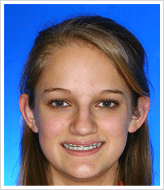RETAINERS
 Basically, retainers are pieces of plastic and metal that are custom-made for people who need them. Retainers are commonly used in the field of orthodontics and work by fitting the top of the teeth as well as mouth. Usually, people wearing braces need retainers that are worn for a certain amount of time after the braces are taken off.
Basically, retainers are pieces of plastic and metal that are custom-made for people who need them. Retainers are commonly used in the field of orthodontics and work by fitting the top of the teeth as well as mouth. Usually, people wearing braces need retainers that are worn for a certain amount of time after the braces are taken off.
There are a number of ways retainers are used to address different kinds of dental problems:
Retainers after wearing braces
After wearing braces, retainers are often used for setting the teeth in the new positions. Dental experts believe that retainers help in controlling the natural shifting of teeth, which is part of the aging process.
Once the braces have been removed by the orthodontist, retainers are given to patients with special instructions on how and when to wear them. In some cases, people are required to wear retainers throughout the day for at least 3 months and later only at night whereas some patients have to wear retainers for a prolonged period. Retainers play the key role in keeping the teeth in line as the body grows.
Tooth Spacing Problems
In many cases, retainers are worn for closing the unnecessary space or gap between teeth or for moving a single tooth. For less serious teeth spacing issues, the orthodontist may only suggest wearing retainers instead of braces. The patient may need to wear the retainers for a certain number of years for closing a space or keeping the particular gap closed by holding other teeth in place.
However, it should be noted that wearing retainers may cause some of the teeth to experience additional pressure and soreness.
Treating Temporomandibular Disorder
If you’re a victim of temporomandibular disorder, then your orthodontist may suggest you to go for retainers. Basically, this disorder results from bite issues, misalignment of teeth known as malocclusion or teeth grinding i.e. bruxism. Grinding the teeth tends to stretch the muscles as well as joints in the mouth and jaws, which triggers headaches as well as pain in the jaw. But, retainers can help offer some relief to TMD patients so that the mouth doesn’t close completely at night and teeth grinding can be avoided.
Addressing Oral Health Concerns
In addition to TMD, malocclusion and teeth grinding, retainers are used for treating a variety of mouth as well as medical problems. For instance, tongue thrust or immature sallow is a medical condition that involves orofacial muscular imbalance, which often leads to speech problems.
The tongue is specifically meant for going to the mouth’s roof but during tongue thrust, it goes through the teeth. There are special retainers used for keeping the tongue from going forward in between the teeth when the affected individual speaks.
Irrespective of why retainers are used, it is important to understand that retainers need special care. As these appliances live in the mouth that is full of bacteria, plaque along with leftover food bits, cleaning the retainers on a regular basis is very important.
